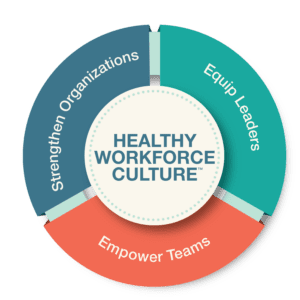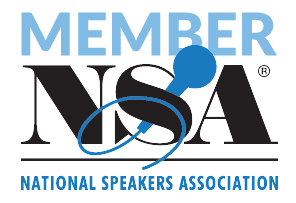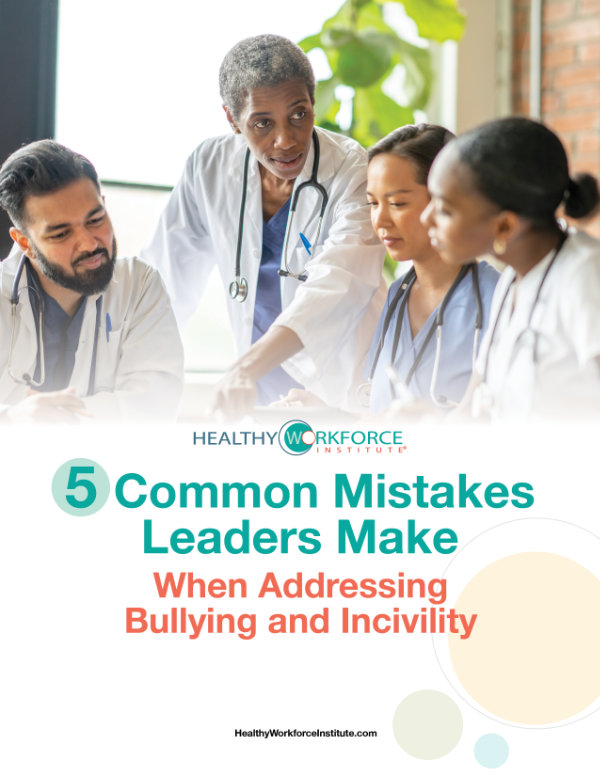 In the complex world of healthcare leadership today, there’s no shortage of challenges. From spearheading cultural shifts and securing committed leadership to grappling with ongoing workforce shortages and managing disruptive behaviors, it’s a demanding landscape. The stress associated with their roles further complicates matters. It’s clear that addressing these challenges goes beyond a mere workshop or a strategic plan checkbox that’s forgotten once created. Effectively navigating these issues to ensure a healthy workforce culture demands a comprehensive approach, involving well-crafted organizational policies, collaborative relationships with Human Resources, unwavering support from executive leadership, and the empowerment of frontline leaders and their teams with the knowledge and skills needed to tackle incivility and bullying.
In the complex world of healthcare leadership today, there’s no shortage of challenges. From spearheading cultural shifts and securing committed leadership to grappling with ongoing workforce shortages and managing disruptive behaviors, it’s a demanding landscape. The stress associated with their roles further complicates matters. It’s clear that addressing these challenges goes beyond a mere workshop or a strategic plan checkbox that’s forgotten once created. Effectively navigating these issues to ensure a healthy workforce culture demands a comprehensive approach, involving well-crafted organizational policies, collaborative relationships with Human Resources, unwavering support from executive leadership, and the empowerment of frontline leaders and their teams with the knowledge and skills needed to tackle incivility and bullying.
We have important work to do in healthcare. To do that work requires an unwavering commitment to putting culture above everything else.
Why does culture matter and why is it more important than anything else?
Recent research confirms that healthcare workers aren’t leaving because of a slightly higher wage down the road. The reason they are leaving is because of how they’re treated by their colleagues. Employees stay when they experience a healthy workforce culture. Therefore, it’s crucial for healthcare leaders to prioritize fostering a culture of professionalism, respect, and support if they want to retain their best employees.
The American Organization of Nurse Leaders (AONL), The Joint Commission, American Association of Critical Care Nurses, and more have all stepped up to say, enough is enough. Healthcare leaders need to put as much energy into addressing disruptive behaviors as they do their quality and financial priorities.
If you want to retain your best people, focus on your culture.
If you want to grow a high performing team, focus on your culture.
If you want to become a destination location, focus on your culture.
If you want to improve the well-being of your employees, focus on your culture.
A healthy workforce culture prioritizing respect, professionalism, and kindness is fundamental for improving patient outcomes, enhancing employee retention, and well-being.
What’s the solution to a culture fraught with bullying and incivility?
Well, for starters, don’t invite everyone to a workshop on disruptive behaviors and check a check box. Trust me. It doesn’t work.
If you really want to create, hardwire, and sustain a healthy workforce culture free from bullying and incivility, it requires a different approach. It requires a top down – bottom up – and everything in between approach.
You need a framework that actually works.
A framework for cultivating a healthy workforce culture:
-
Strengthen organizations, focuses on strategies to hardwire and sustain a healthy work culture at the system’s level, thereby enabling interprofessional healthcare teams to provide safe, high-quality patient care and with positive financial impact on the organization.
Incorporate culture into onboarding new employees, new leaders, new physicians, and providers.
Equip your newest graduate nurses and their preceptors with the knowledge, skills, and tools they need to confront disruptive behaviors.
Create and communicate a process for holding employees – all employees – accountable for professional conduct.
-
Equip leaders with the knowledge, strategies, and confidence to cultivate a kind, respectful, and professional work environment. Leaders are better able to hold individuals accountable and ensure that all interactions are respectful, professional, and collaborative.
In addition to teaching new leaders the administrative tasks of their role (payroll, staffing matrix, quality metrics, budgets, etc.), they need to learn people skills too. They need to learn how to address bullying and incivility and hold their employees accountable for professional conduct.
Provide ongoing skill develop coupled with opportunities for leaders to engage in ongoing conversations about culture and conduct.
-
Empower teams to become a part of the solution by actively engaging in strategies to create and sustain a healthy work culture.
Include content related to bullying and incivility in employee orientation programs and as part of yearly competencies.
Invite professional governance to sit at the table when decisions are made regarding culture, retention, and employee well-being.
The Healthy Workforce Institute’s Healthy Workforce Culture Framework™ provides healthcare organizations with a structured plan incorporating these competencies to create a culture where bullying and incivility are immediately rejected and kindness, respect, and professionalism become the new norm.
Your culture didn’t get this way overnight and it certainly won’t change overnight. But it will change. The question is, HOW do you want it to change. Skip any one of these components and you’ll likely fall short of designing a culture where bullying and incivility are immediately rejected and kindness, respect, and professionalism become the new norm – where good people stay, and patients receive amazing care.
Stop putting culture at the bottom of your list of priorities. Start making culture THE priority using the Healthy Workforce Culture Framework™ today!












